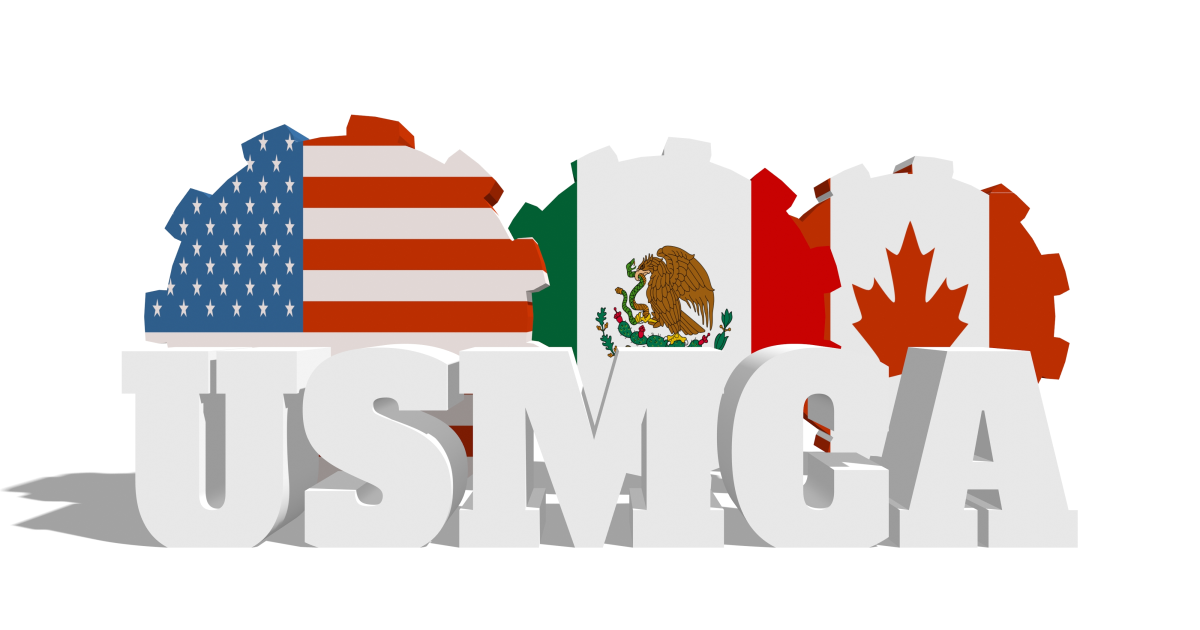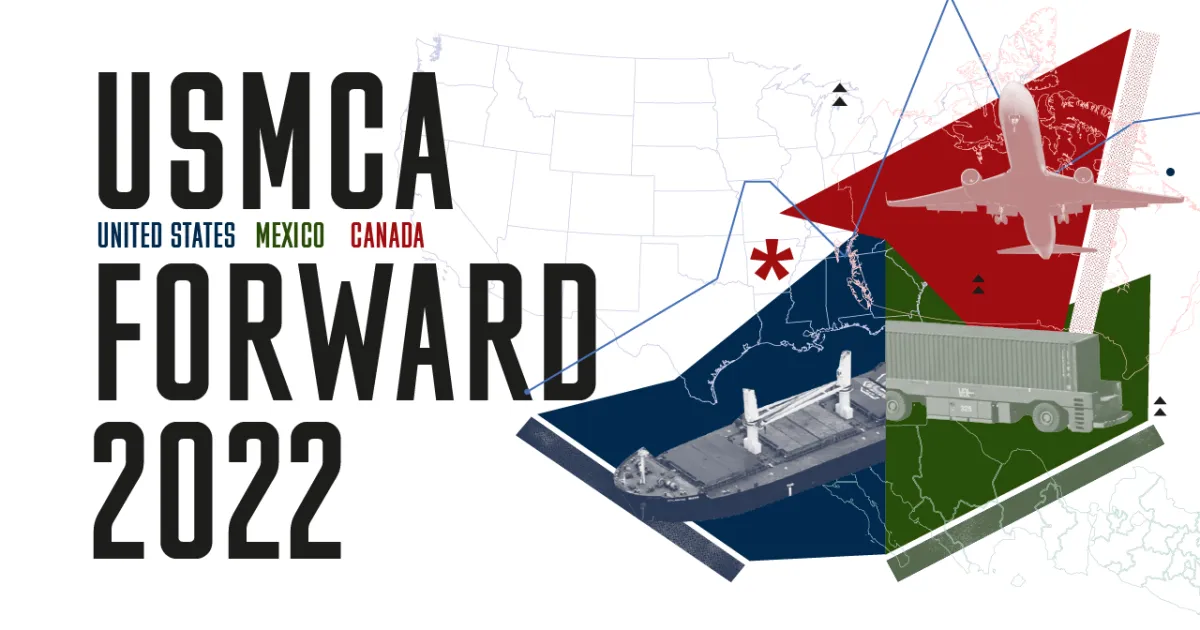
CHAPTER 5
NON-TARIFF MEASURES
Non-tariff measures as barriers to deepening and strengthening North American supply chains
Since the beginning of this century, due to NAFTA and the USMCA, practically all of trade in North America is free of tariffs. However, one of the most important and prevalent challenges to trade in goods among the North American partners is the different, behind-the-border non-tariff measures such as technical regulations, standards, measures, and certification processes that products must comply with.
Due to such differences, producers need to have diverse production lines to supply domestically and regionally. In addition, they must apply to separate certification processes since what is certified in one country is not valid in others.
Technical regulations (applicable to industrial products) or sanitary and phytosanitary (SPS) measures (applicable to animals, plants, or products thereof) aim to protect human, animal, or plant life or health. Imported products must undergo conformity assessment or certification and approval procedures such as testing, verification, and inspection to confirm compliance with these non-tariff measures.
Through diverse mechanisms (e.g., dialogue through bilateral or trilateral committees or working groups) and negotiations, progress has been made since NAFTA came into force. However, many non-tariff measures have deterred greater integration and reduced the competitiveness of North American supply chains.
There has been a temptation by North American partners to use regulations to protect their markets. Such protectionist measures have led on occasion to trade tensions and disputes (see WTO cases U.S.–Tuna II and U.S.–COOL below).
One way to reduce the costs to trade from non-tariff measures is for Mexico, Canada, and the United States to adopt common regulations, and for each country to recognize the testing of compliance done in the exporting country in the importing country, thereby avoiding the need for duplicative conformity assessment costs. However, harmonizing regulations and certification processes has been difficult to accomplish since countries want to maintain their policy space.
It is crucial that future initiatives and negotiations on regulatory alignment are tied to: strong leadership; a shared prioritization of the regional regulatory agenda; recognition of the institutional arrangements.
Thus, attempts to reduce regulatory divergence by agreeing to base technical regulations on international standards have been limited as countries have retained the right to diverge from international standards where they exist, as long as these (i) do not arbitrarily or unjustifiably discriminate among partners; (ii) are not applied in a manner that would constitute a disguised restriction on international trade; and (iii) are not more trade-restrictive than necessary to fulfill a legitimate objective (USMCA- Chapter 9, SPS Article 9.6.6 (d) and Chapter 11, Technical Barriers to Trade, Article 11.5).
An alternative to harmonization has been to focus on whether regulations are equivalent in that they achieve similar goals, despite differences in approaches (e.g., aeronautical components, telecommunications equipment, and used cars).
Regulatory efforts
The strive for regulatory alignment within the North American region started in 1994 with the entry into force of NAFTA. NAFTA established the Committee on Standard- Related Measures and the Committee on Sanitary and Phytosanitary Measures to address regulatory cooperation.
In the context of the first North American Leaders Summit (the “Summit”) held on March 2005, the three countries’ leaders launched the Security and Prosperity Partnership of North America (“SPP”), a trilateral initiative aimed at bolstering the economic and commercial relationship with a special focus on guaranteeing greater security over shared borders. The SPP provided a mechanism that allowed for the heads of government and ministers in charge of security, foreign affairs, and trade agendas of the three countries, to maintain a constant dialogue. This mechanism envisaged the establishment of multidisciplinary national working groups, annual reports on their accomplishments, and meetings that reunited high-level officials on a periodic basis to advance progress on, among many strategic issues, the technical barriers to trade and SPP’s objectives.
In 2009, the SPP ceased to operate due to the change in the U.S. administration, 2008- 2009 financial crisis, and other political hurdles in the three countries. From then on, regulatory cooperation has mainly been pursued bilaterally.
In 2010, Presidents Obama and Calderón created the High-Level Regulatory Cooperation Council (the “Council”), which was integrated by senior-level regulatory and trade officials. The Council’s main goal was to make regulations more compatible, increase simplification, and reduce burdens without compromising public health and safety, environmental protection, or national security.
Despite its positive initial progress, political support for the Council reached a stalemate.
Mexico reached the following relevant results with its North American partners during the Calderón administration in the following sectors:
- The Bilateral Aviation Safety Agreement with the U.S. in 2007, for the mutual recognition of standards in the fabrication of aeronautical components and the corresponding conformity assessment procedures;
- Mexico’s unilateral recognition of equivalence of technical regulations and certifications applied to certain electronic devices in the U.S. and Canada, in August 2010;
- Mexico’s unilateral recognition of equivalence of technical regulations and conformity assessment procedures with respect to medical devices that already have marketing authorization in the U.S. and Canada, in 2010;
- The Mutual Recognition Agreement for Conformity Assessment of Telecommunications Equipment with the U.S., in 2011; and
- The recognition of equivalence of technical regulations and certifications applied to used cars in the U.S. and Canada, in October 2011.
Canada, Mexico, and the United States have also advanced their regulatory efforts through the World Trade Organization (WTO) Agreements on Technical Barriers to Trade (“TBT Agreement”) and the Application of Sanitary and Phytosanitary Measures (“SPS Agreement”) and their respective Committees. Both agreements include obligations that foster alignment of national regulations with international standards.
In 2018, Mexico and Canada—as part of their participation in the Comprehensive and Progressive Agreement for Trans-Pacific Partnership (CPTPP)—adopted NAFTA plus text aimed at addressing non-tariff barriers, the main commitments being:
- Chapter 8 (Technical Barriers to Trade): Requires Parties to intensify their collaboration on mechanisms to facilitate the acceptance of conformity assessment results. This chapter also contains specific annexes pertaining to wine and distilled spirits; information and communications technology (“ICT”) products; pharmaceuticals; cosmetics; medical devices; proprietary formulas for pre-packaged foods and food additives; and organic products.
- Chapter 7 (Sanitary and Phytosanitary Measures): Encourages parties to apply equivalence to a group of measures or on a system-wide basis.
- Chapter 25 (Regulatory Coherence): Commits parties to continue striving to attain regulatory coherence by using good regulatory practices in the development of regulatory measures.
In addition, the CPTPP establishes Committees on Technical Barriers to Trade; Sanitary and Phytosanitary Measures; and Regulatory Coherence.
USMCA built upon and intended to go beyond NAFTA, WTO, and CPTPP rights and obligations. Under the USMCA Chapter 9 (Sanitary and Phytosanitary Measures) SPS measures were enhanced by increasing transparency on the development and implementation of SPS measures— improving processes and simplification of procedures for the certification, regionalization, and equivalency determinations, and establishing mechanisms to increase cooperation and exchange information. USMCA Chapter 9 also improves equivalence, by requiring parties to recognize SPS measures to the extent feasible and appropriate to a group of measures or on a systems-wide basis, if the exporting party demonstrates to the importing party that the exporting party’s measure achieves the importing party’s appropriate level of protection.
USMCA Chapter 11 (Technical Barriers to Trade) goes beyond WTO and CPTPP provisions in relation to the identification of international standards, guides, and recommendations, as it requires parties to apply the decisions and recommendations adopted by the WTO Committee on Technical Barriers to Trade since January 1, 1995, and to cooperate to ensure that international standards and recommendations do not create unnecessary obstacles to trade. With respect to conformity assessment, this chapter includes the parties’ commitments to reduce the number of times a product must be tested to comply with technical regulations. Furthermore, considering Mexico’s negative experience with the United States’ application of labeling standards (see section Technical barriers to trade and phytosanitary tensions and disputes below), this chapter obliges parties to ensure that all technical regulations pertaining to labels accord treatment no less favorable than that accorded to like goods of national origin and do not create unnecessary obstacles to trade.
The USMCA incorporates the commitments embodied in the CPTPP pertaining to Sectoral Annexes (USMCA Chapter 12) and Good Regulatory Practices (USMCA Chapter 28). This agreement also creates committees on: Sanitary and Phytosanitary Measures, Technical Barriers to Trade, and Good Regulatory Practices.
Technical barriers to trade and sanitary and phytosanitary tensions and disputes
North American supply chains would greatly benefit from the parties’ cooperation towards harmonizing or recognizing the equivalence of their regulations. However, on certain occasions, North American partners have opted for an opposite path, not only departing from the former objective, but using technical regulations and SPS measures to protect their domestic production. These decisions have led to tensions and disputes.
Following are regulatory disputes that parties decided to escalate to the WTO dispute settlement mechanism, and others that could eventually be presented either under a WTO or a USMCA arbitration panel. Such disputes, aside from affecting trade, have had a negative impact on regional supply chains and have distracted parties from advancing a constructive agenda, not only regarding regulatory issues, but the cooperation agenda in general.
In the WTO case U.S.–Tuna II, the U.S. did not allow the use of the “dolphin safe” label on tuna imported from Mexico because of the way the tuna had been caught (although it was more sustainable than other techniques), which affected the marketing of Mexican tuna in the U.S. The WTO Appellate Body found that the measures violated the TBT Agreement, as they discriminated against Mexican tuna and tuna products.
In the WTO case U.S.–COOL, the dispute hinged on the United States’ adoption of country of origin labeling provisions (“COOL measure”) for certain products that mandated that for a product to be labeled as originating in the U.S., all stages of production had to take place in that country’s territory.1 These requirements impacted beef from calves born in Mexico as well as Canada, that although raised and slaughtered in the U.S., could not benefit from the label, imposing a disproportionate burden on upstream producers and processors. In June 2012, the Appellate Body found that the COOL measures were inconsistent with the TBT Agreement.
More recently, there is tension surrounding glyphosate and genetically modified corn. Mexico has rejected import permits for glyphosate-containing chemical products and has delayed the registration and marketing of at least 2,686 applications for certain pesticides and agricultural chemicals. In parallel, on December 31, 2020, Mexico’s Ministry of Agriculture issued a decree that mandates the phase-out and eventual replacement of the use of glyphosate and glyphosate-containing products by January 31, 2024 (the “Decree”). Agricultural and livestock supply chains heavily depend on Mexico’s imports of yellow corn for animal feed.
Mexico has rejected import permits for glyphosate-containing chemical products and has delayed the registration and marketing of at least 2,686 applications for certain pesticides and agricultural chemicals.
On October 3, 2022, President López Obrador announced the implementation of the Agreement against Inflation and Scarcity. Through this measure, the federal government granted all “Unique Universal License” to import and distribute basic foods and inputs while exempting them from import taxes and “all procedure or permit.” This measure could have sanitary and phytosanitary repercussions.
Final considerations
There are relevant challenges to overcome in the regulatory arena. Thus far, they have been mainly addressed bilaterally. However, given the impact of each country’s non-tariff barriers on North American supply chains, a trilateral approach seems necessary. This should include the following:
- At the highest political level between heads of government and high-level officials: Monitor the discussions and follow-up on the trilateral relationship; and
- At the private sector level among the wide range of industries involved in the regulatory environment: Active participation from all stakeholders would facilitate the prioritization of the dialogue at a political level, as well as the subsequent signing of agreements.
In addition, parties should try to conciliate economic interests within industries and the agencies charged with the certification of compliance with technical standards, as such interests have on many occasions prevented the three countries from achieving deeper cooperation.
On the political front, incoming governments have tended to undo existing institutions to create new ones, thus when the new mechanisms of dialogue are finally in place, the window of opportunity for making any progress is small, and the accomplishments fall short of the imperious needs within the North American region. It is crucial that future initiatives and negotiations on regulatory alignment are tied to: strong leadership; a shared prioritization of the regional regulatory agenda; recognition of the institutional arrangements in place; and organized efforts through the offices of the leaders of each country. This would limit opportunities for bureaucratic infighting and encourage the effective coordination between government agencies.
Hopefully, the legal and institutional framework provided under the USMCA will help shorten and perfect global value chains through regulatory alignment in strategic sectors (e.g., vehicle, oil and gas, information technology, electric-electronic, agriculture). Mexico, the U.S., and Canada must strengthen their economic cooperation and ties. Regulatory bridges must be constructed to connect these nations, instead of walls, in its literal and broader meaning.
Endnotes
- 1. The provisions were stipulated in the Agricultural Marketing Act of 1946, as amended by the Farm, security and Rural Investment Act of 2022 and the Food, Conservation and Energy Act of 2008, as implemented through the regulations published as 7 CFR Parts 60 and 65. See Id.
Viewpoints

Brian Kingston explains how North America can work together to build an integrated and resilient supply chain for electric vehicles.

